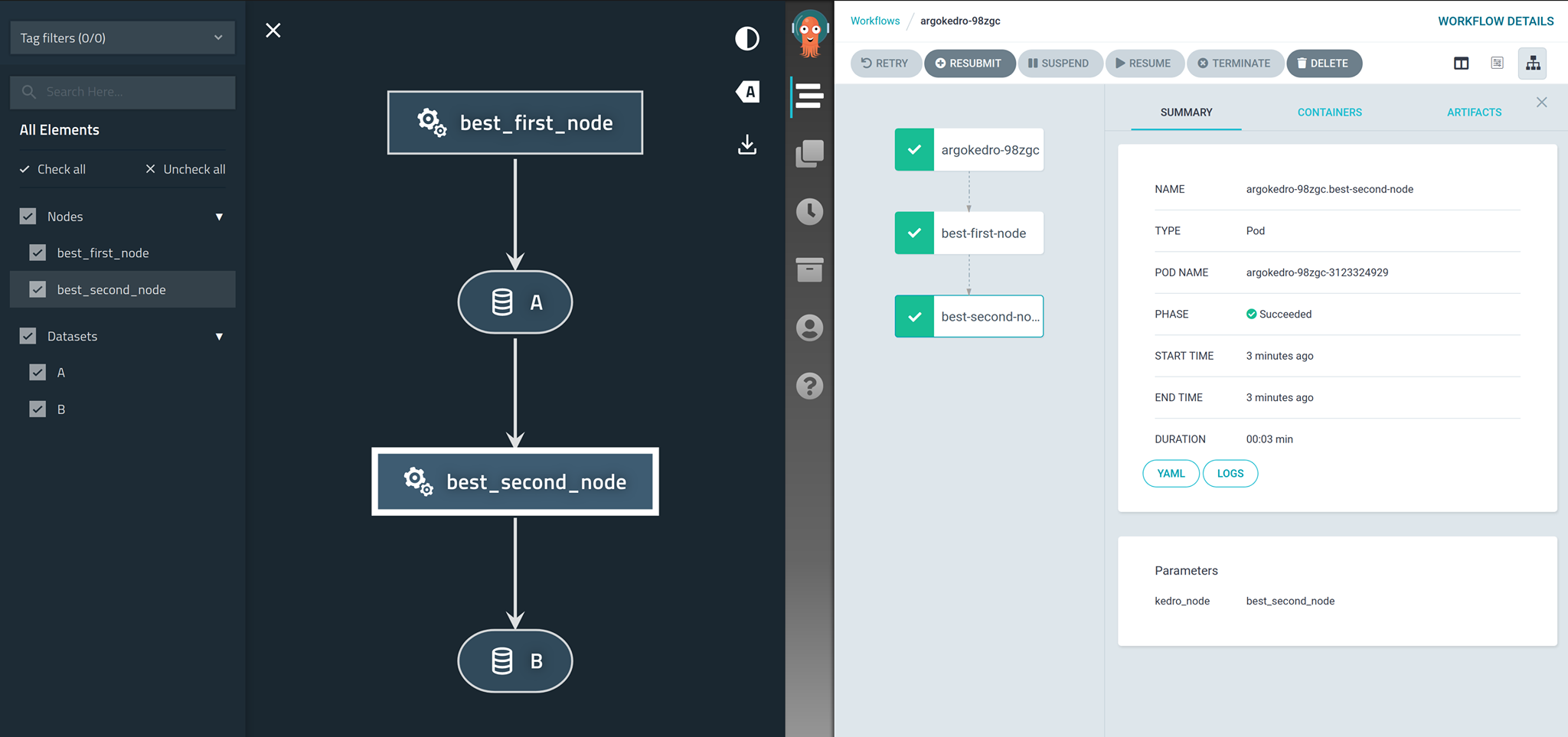| docs | |
|---|---|
| tests | |
| package |
Converting kedro pipelines to argo pipelines.
- Free software: BSD 3-Clause License
pip install kedro-argo
You can also install the in-development version with:
pip install https://github.com/nraw/kedro-argo/archive/master.zip
- To be used with Kedro, so it's assumed this package is used with a Kedro project.
- Argo CLI is needed for the deployment step. It's also assumed that Argo is already installed on your kuberentes instance.
- You must specify an image name as a parameter. You can generate the image using Kedro-docker.
- As the workflow will be in Argo, which means every step will run in its own container. Therefore, all datasets should be somehow passed between containers or else the pipeline will fail. This means either all datasets should be saved externally (S3, Azure, etc.) or in a shared folder that your deployment would have access to.
When installed, argo should be visible under your kedro commands, if you're in a kedro project
kedro
Then you have two options for obtaining the yaml file, namely via Helm or via ytt.
kedro argo IMAGE_NAME
Add this repository to your helm charts:
helm repo add kedro-argo https://nraw.github.io/kedro-argo-helm/
Then either directly install it by passing the kedro.yaml for input values
helm install -f templates/kedro.yaml kedro-argo kedro-argo/kedro-argo
Or clone it to your repository and change anything that you would still need:
helm pull kedro-argo/kedro-argo --untar
Get the kedro.yaml file by running
kedro argo --ytt IMAGE_NAME
You can now run:
ytt -f templates > argo.yaml
or if you prefer in Docker:
docker run --rm -it --name ytt -v $(pwd)/templates:/templates gerritk/ytt:latest -f /templates > argo.yaml
and finally
argo submit --watch argo.yaml
https://kedro-argo.readthedocs.io/
To run the all tests run:
tox
Note, to combine the coverage data from all the tox environments run:
| Windows | set PYTEST_ADDOPTS=--cov-append tox |
|---|---|
| Other | PYTEST_ADDOPTS=--cov-append tox |





